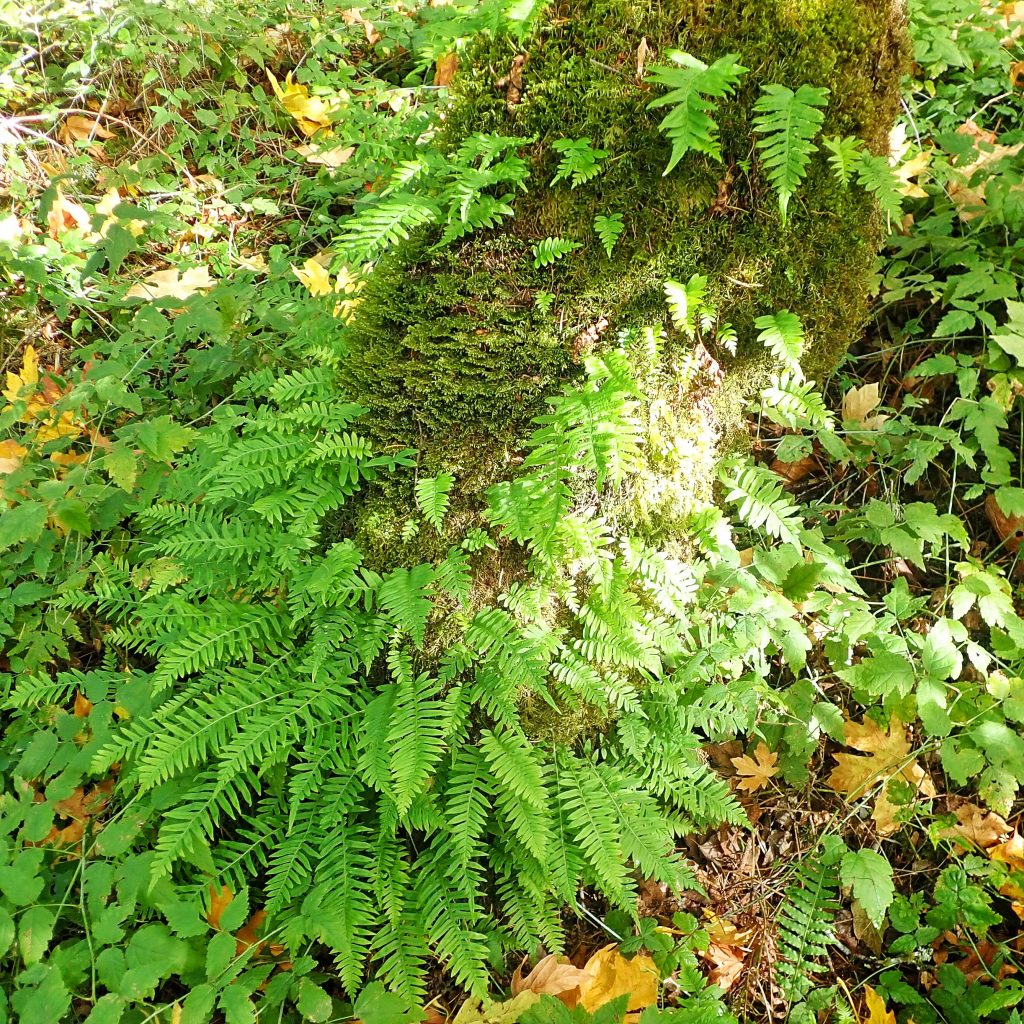
Ferns are vascular plants (Tracheophytes), which means they have vessels to conduct water, minerals, and the sugars produced by photosynthesis. But they are in the phylum Pteridophyta (spore producing vascular plants) because their means of reproduction is vastly different than that of the phylum Spermatophyta (seed producing vascular plants). Since this is my first profile of a fern I’m going to take a few lines to talk about that reproductive system that makes ferns different than other vascular plants.
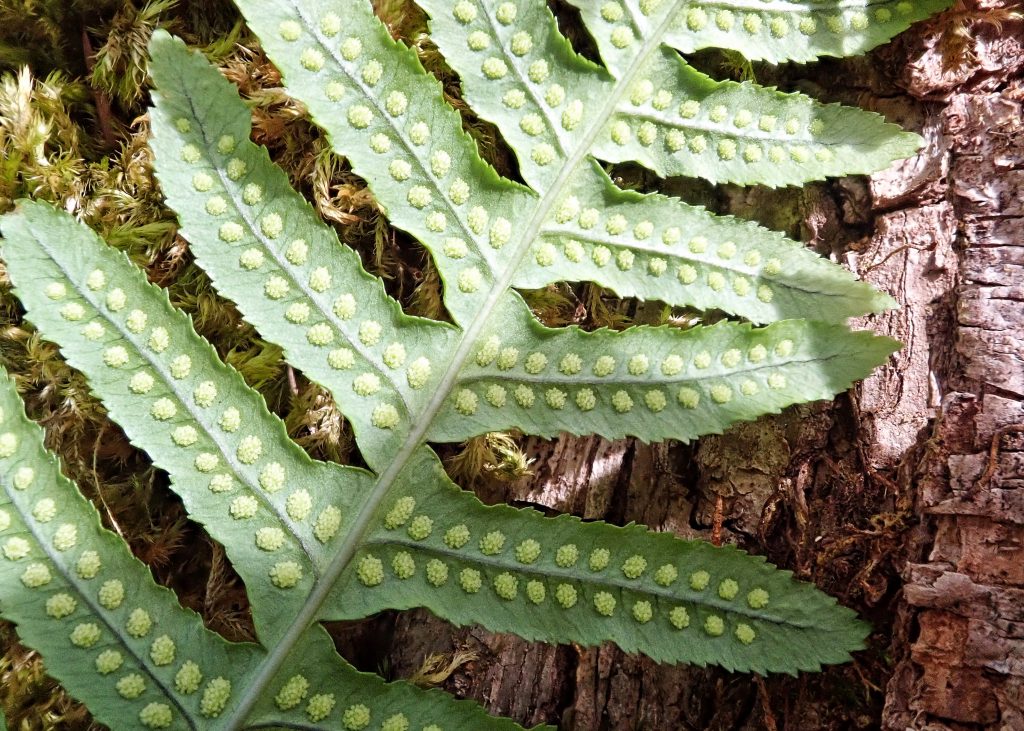
You are probably all familiar with the fertilization process of the seed producing plants, wherein pollen from the male part of a flower is transported by wind or animal action to the ovule of the female part of a flower, fertilizing an egg, which becomes a seed, from which an entire plant can be grown. For ferns and other spore producers the process is not that easy or straightforward.
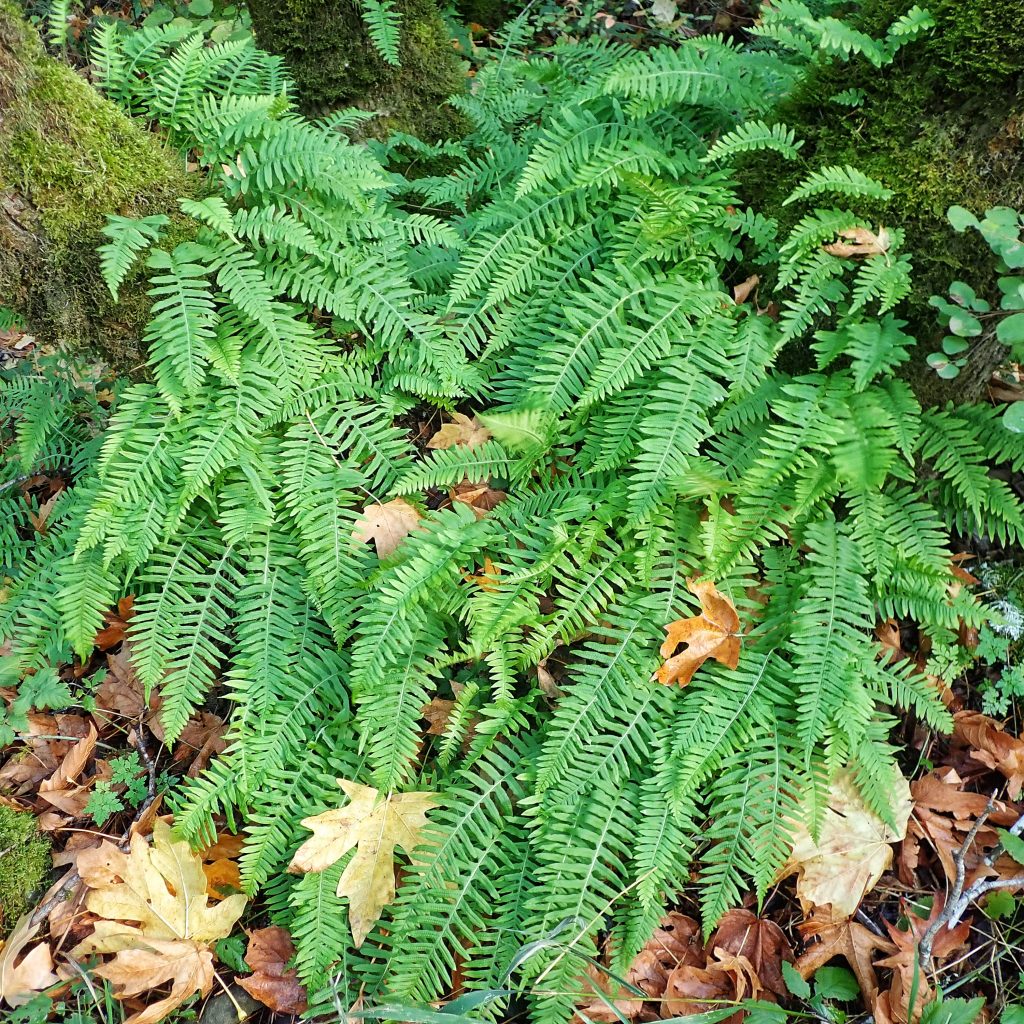
Ferns have two generations per plant, the gametophyte and the sporophyte. Both are involved in reproduction. Sporophytes, which are what all of us think of as ferns, are the asexual reproductive generation and produce the spores, which are haploid, meaning they only have one set of chromosomes. (This is necessary to prevent a doubling of chromosomes with each generation, and desirable for genetic diversity because each set of chromosomes will eventually pair with a different set during fertilization, thereby creating a diploid zygote). It is accomplished through the process of meiosis (which is necessary for the sexual reproduction of all multicellular lifeforms), a reproductive cell division mechanism whereby a paired set of chromosomes is first duplicated, and then each paired set recombines with each other to create 4 unique chromosomes, which then split apart to form 4 cells which become spores (or male or female gametes in most animals and seed bearing plants).
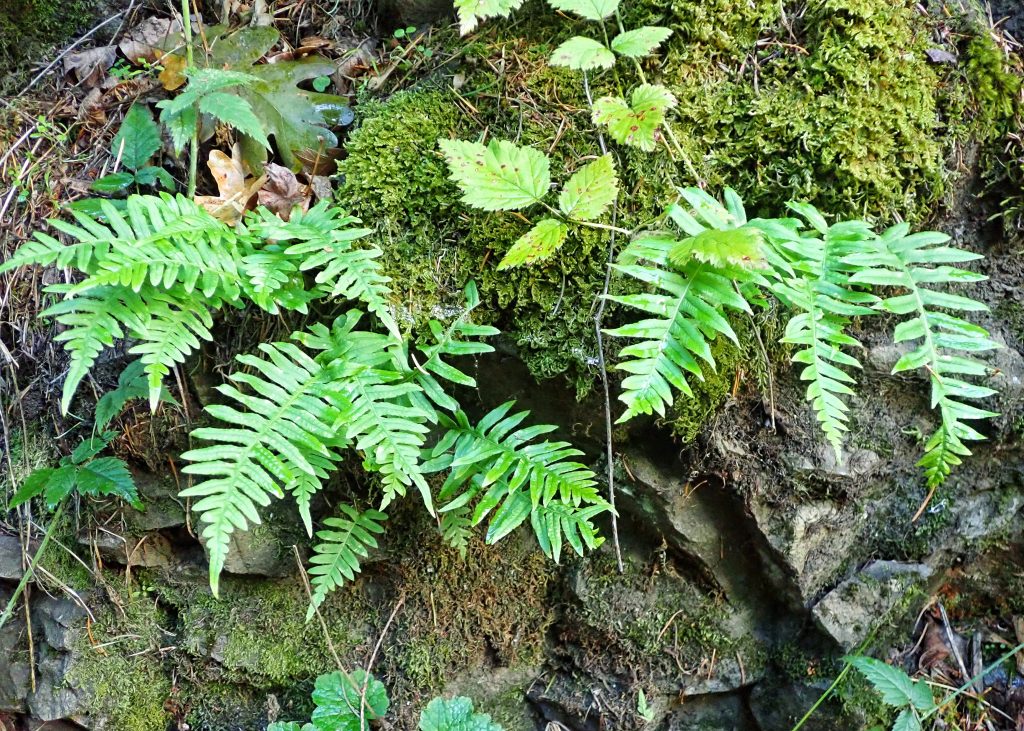
Most of the ferns in our region (including Polypodium glycyrrhiza) produce their spores from small leptosporangia, which are single celled structures clumped together as sori on the ventral side of the leaf. When they dry out the sudden rupture catapults the spores away from the plant.
If the spores land in a suitable location they will germinate and produce a gametophyte. These are very short, heart shaped, thumbnail sized green plants, which do not grow any bigger. Instead they produce an archegonium (the female part that produces the eggs), and/or an antheridium (the male part that produces sperm). This is the sexually reproductive generation. The sperm require a liquid medium to swim to the egg, although ‘swim to’ is something of a misnomer, since it implies volition and navigation. When there is enough liquid (usually rain but sometimes heavy dew) to activate the sperm they strike out blindly, and occasionally stumble into an egg. When that happens the sporophyte begins to grow from that archegonium, the gametophyte dies off, and a fully fronded fern arises to repeat the process.
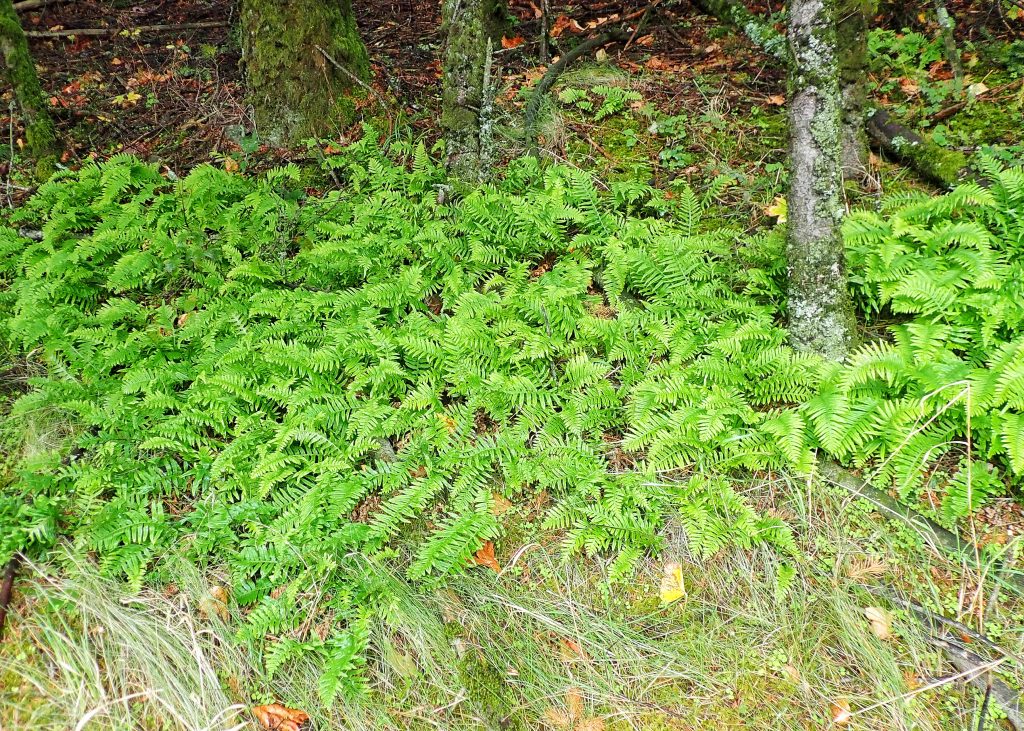
Usually the sperm finds an egg from a different gametophyte, and cross fertilization happens. For genetic diversity that is the preferred outcome. However, occasionally self fertilization occurs, and that can have interesting results, which I’ll get to in a bit.
In the case of our profile species, Polypodium glycyrrhiza, things occasionally take a different turn. Sometimes the spores germinate in proximity to a those of a closely allied species, like P. amorphum. Gametophytes are formed by each one, rains come, sperm start swimming blindly around and one of them from P. glycyrrhiza ends up fertilizing the egg of P. amorphum, or vice versa. This results in a hybrid plant, which is sterile. But that can change.
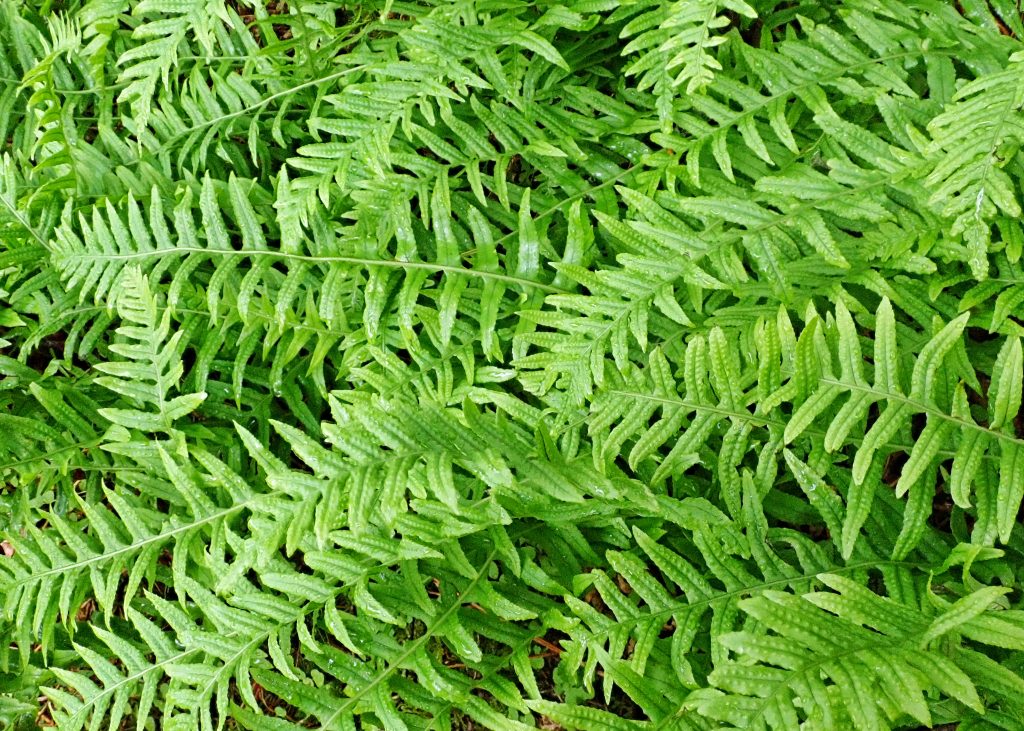
When hybrid fertilization takes place the two sets of genetic material combine in enough ways to create the plant structure, but in the meiosis preceding spore formation the chromosomes, since they are not homologous pairs, will fail, like square pegs in round holes, to recombine successfully, causing the chromosomes to be distributed unevenly, and the spores either do not form or are aborted .
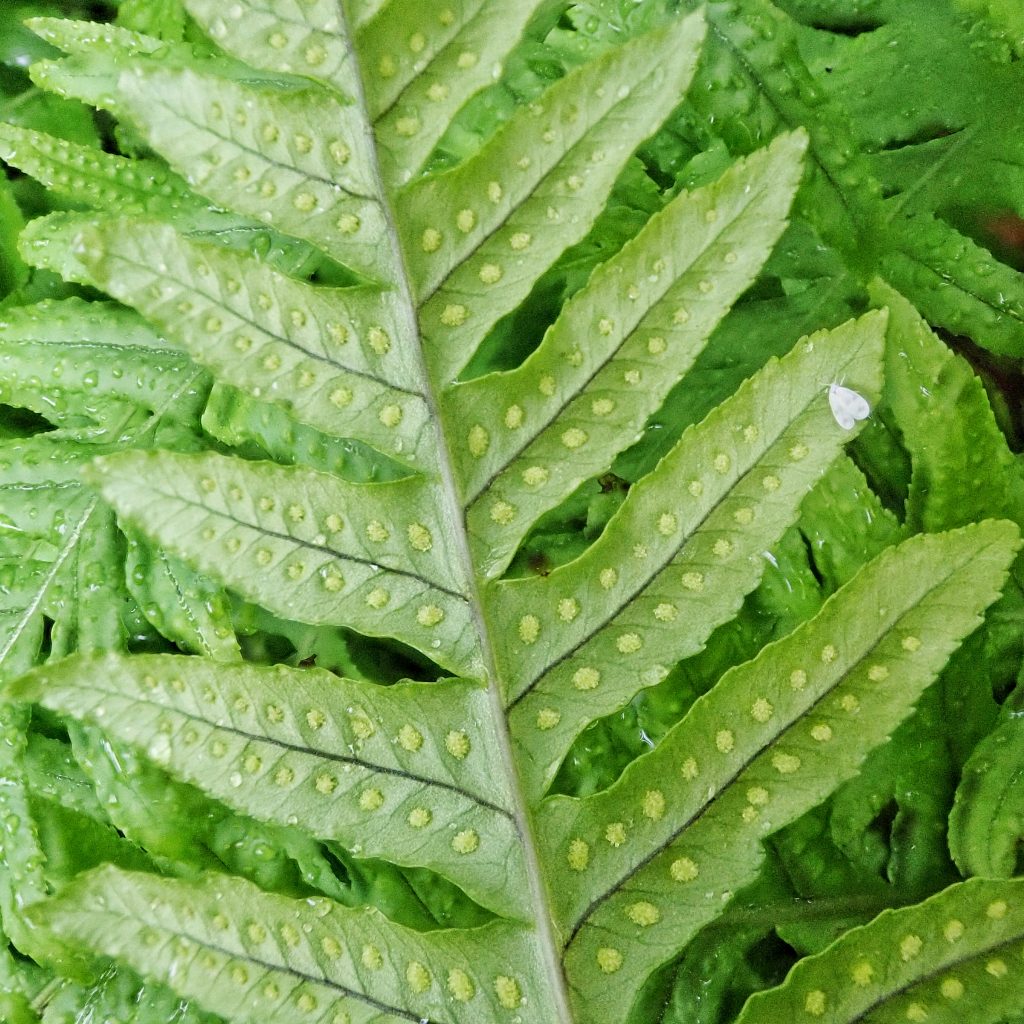
But here is where it gets very interesting. Sometimes there is an abnormality where meiosis fails and is essentially replaced in the leptosporangia by mitosis, the relatively simple copying that is the basis for most non-reproductive cell division, and functional diploid, rather than haploid, spores are formed. And then those spores germinate and produce gametophytes. And sometimes an egg is self-fertilized by sperm from the same gametophyte. This results in a plant that is tetraploid and fertile, because there will then be homologous pairs of chromosomes, and meiosis can result in a functional diploid spore. And suddenly you have an entirely new species of fern. The outcome of this meiosis failure/self fertilization scenario is called polyploidy. And it is not that rare in the world of ferns.
In fact it is almost common in areas that have populations of both Polypodium glycyrrhiza and P. amorphum. It has happened often enough that Polypodium hesperium, the tetraploid species formed by their union, is widespread and has formed many self-sustaining colonies.
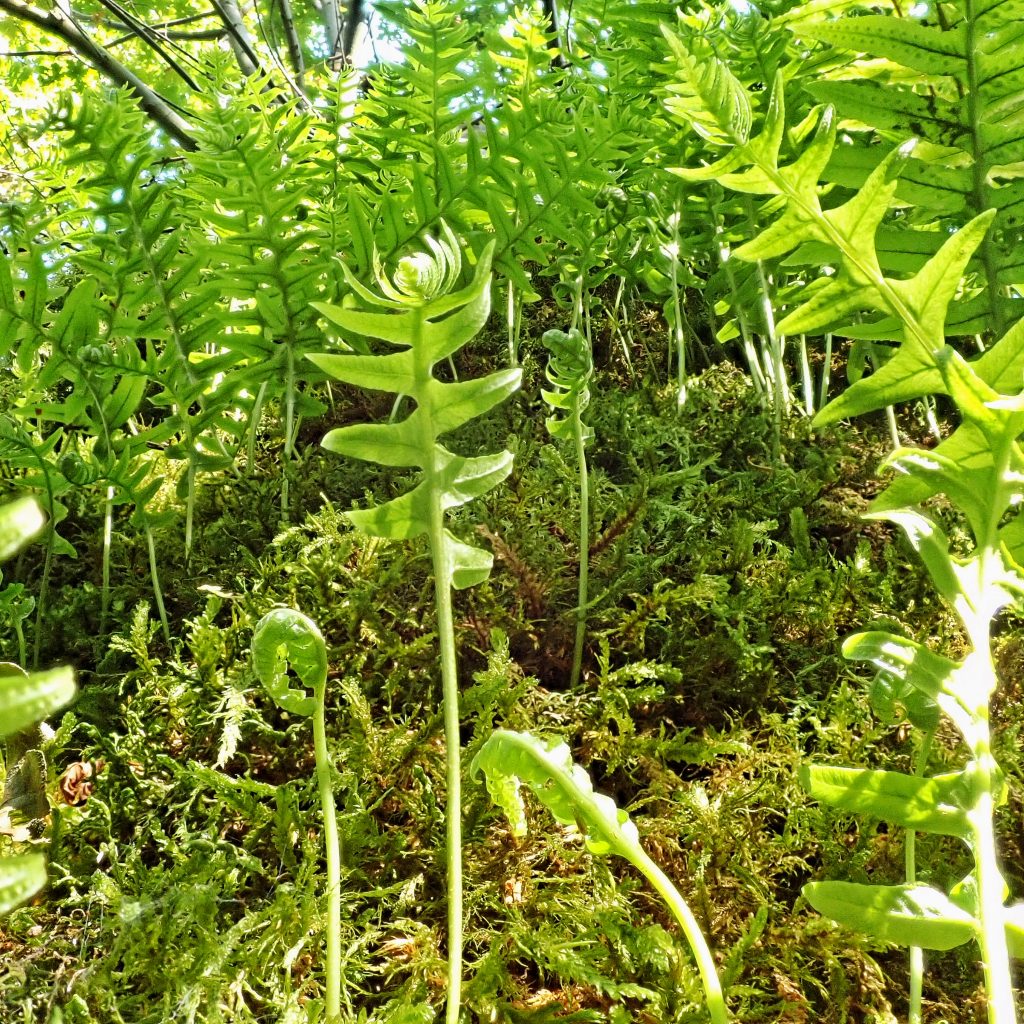
Polypodium glycyrrhiza is summer deciduous, which in this case means, as explained to me by Dr. David Wagner of the Northwest Botanical Institute, that in early summer the plant loses its deciduous fronds (which are technically leaves with individual leaflets called pinnae), leaving the perennial rhizome hidden in the moss. During the summer dormancy the rhizome develops buds, which unfurl when the fall rains come. Cultivated specimens can sometime be induced to keep their fronds through the summer by judicious watering. This also may occur in wild plants, when their moss bed harbors enough moisture to keep the rhizome damp.
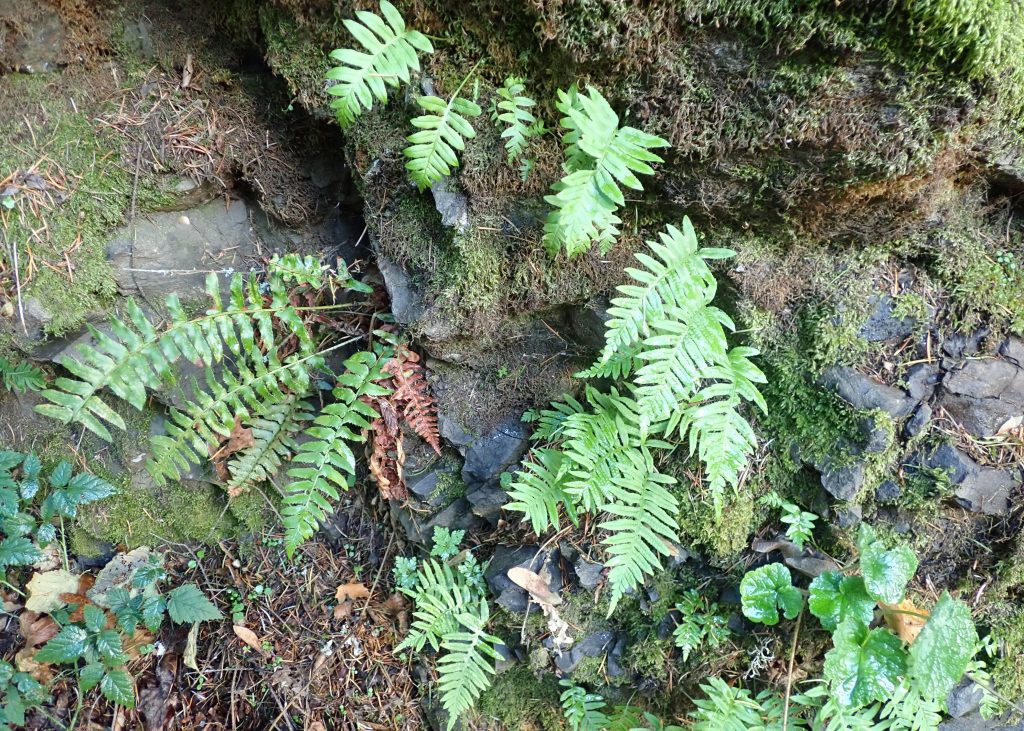
Native peoples of the PNW had many uses for this plant. The root (rhizome) was chewed for its sweet flavor and given to children as an appetizer. It was sometimes grated and used to sweeten foods and medicines. Tea was made from the rhizome and drank for its licorice like flavor, as well as for soothing sore throats and coughs. Modern herbalists sometimes use the tea, or a topical paste made from the rhizome, to treat allergy symptoms.
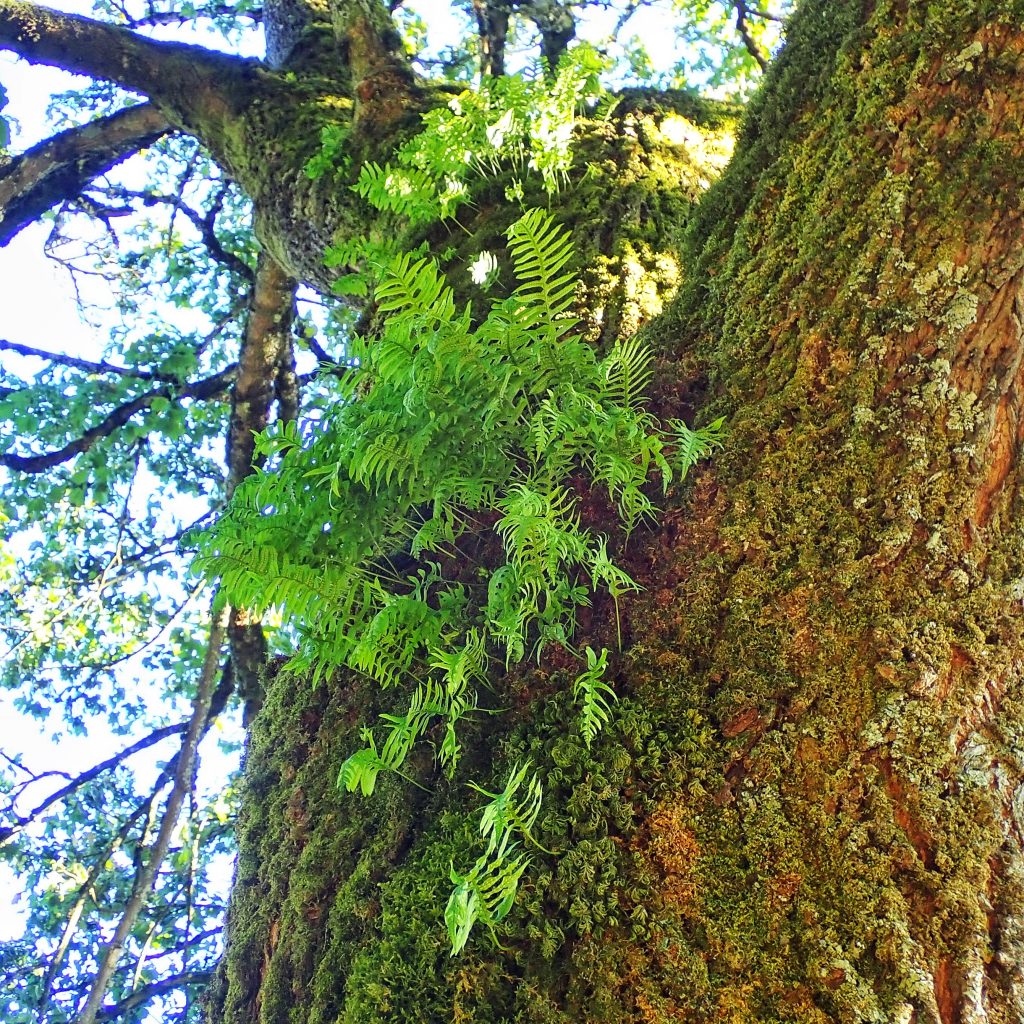
Description– Vivid green fronds that do not arise from a central location. Instead they pop up at nodes along the rhizome, or grow singly from a gametophyte. Once pinnate leaves, pinnae (leaflet) long, narrow, usually pointed, toothed but unlobed, sessile. Circular sori in rows midway between mid vein and margin. Rhizomes taste like licorice.
Similar species– Polystichum munitum (Sword Ferns) have pinnae on short petioles; Blechnum spicant (Deer Fern) have sterile fronds with fertile stalks growing from the center of the rosette; Polypodium amorphum and P. hesperium (Western Polypody) have blunter tips to the pinnae, which are less than twice as long as they are wide.
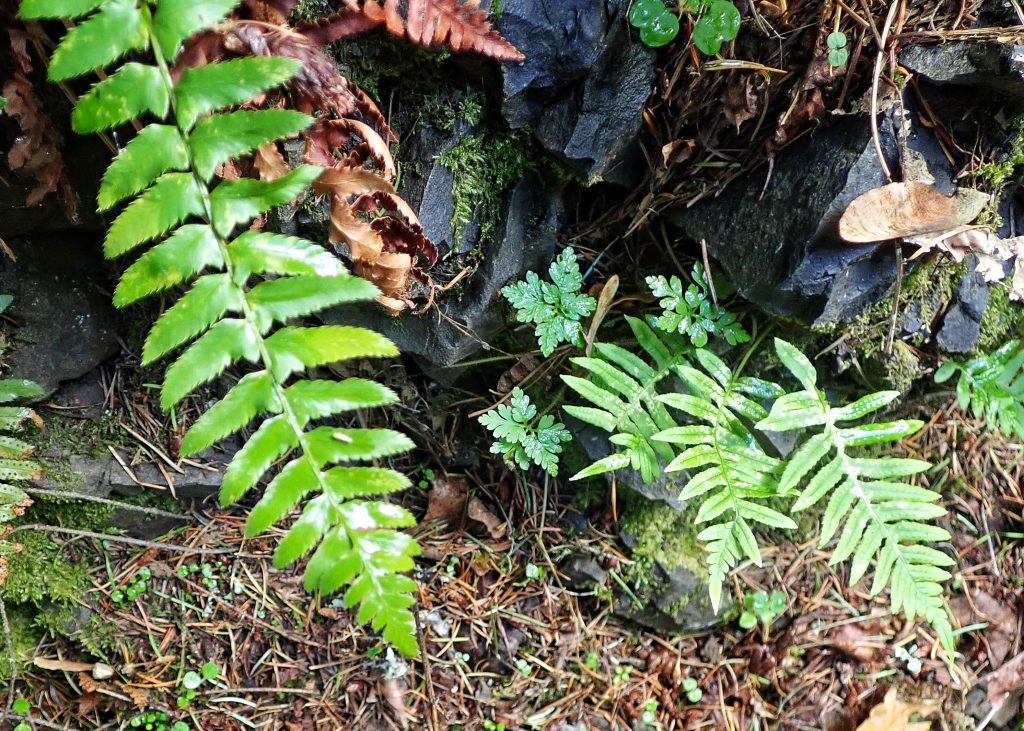
Habitat– Frequently epiphtyic, especially on maples and other hardwoods; occasionally found on conifers. Also frequently found on logs, rock and talus. Occasionally found on soil.
Range– Region wide in mesic forests.
Reproductive timing– Sporangia develop during the winter and spores are released by mid spring, although the occasional plant which does not lose its leaves may produce spores in the fall.
Eaten by– Doesn’t seem to be a significant food source for anything.
Etymology of names– Polypodium means ‘many footed’ in Latin, and refers to this genus’ propensity for springing up from rhizomes. The epithet glycyrrhiza is Greek for licorice, which refers to the taste of the rhizome. It was always assumed that the rhizome contained glycyrrhizinic acid, the active constituent in licorice, but it now appears the taste comes from a polypodoside.
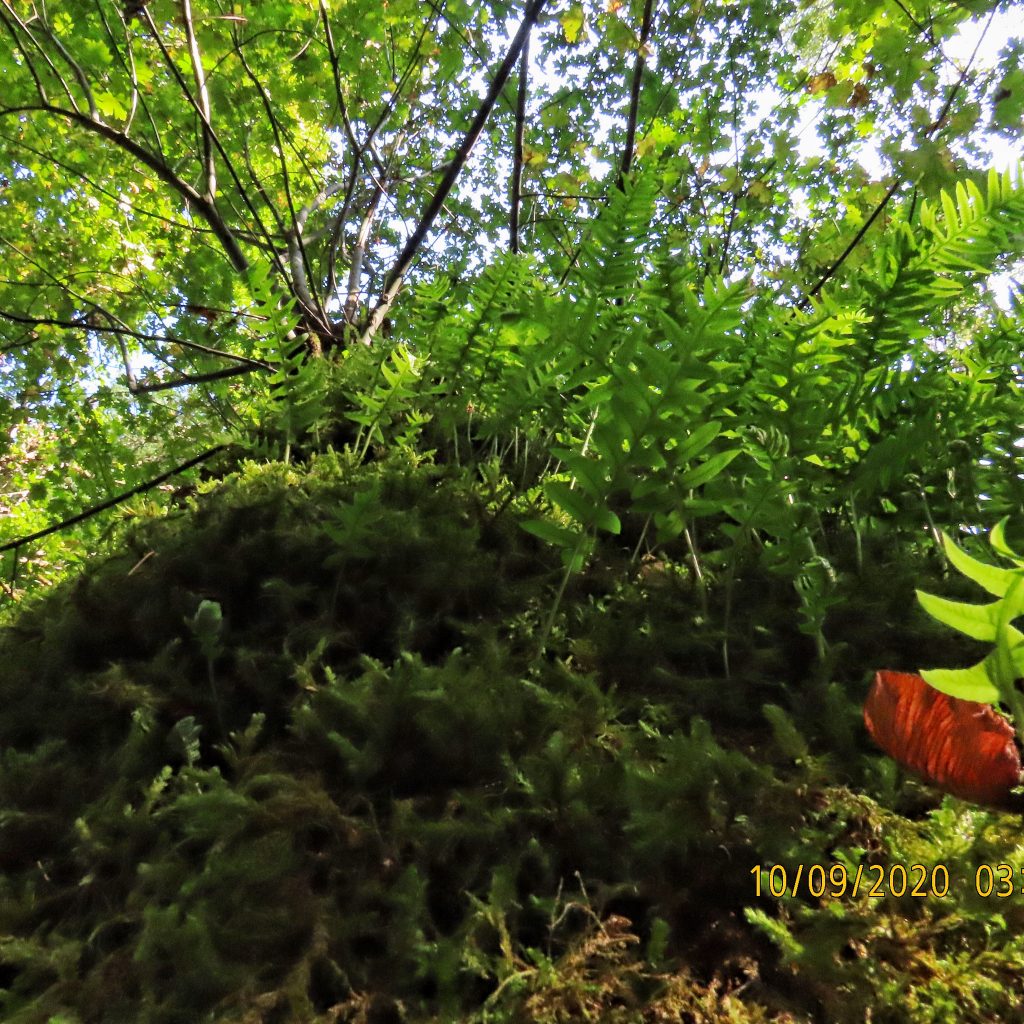
https://pfaf.org/user/Plant.aspx?LatinName=Polypodium+glycyrrhiza
https://en.m.wikipedia.org/wiki/Polypodium_glycyrrhiza
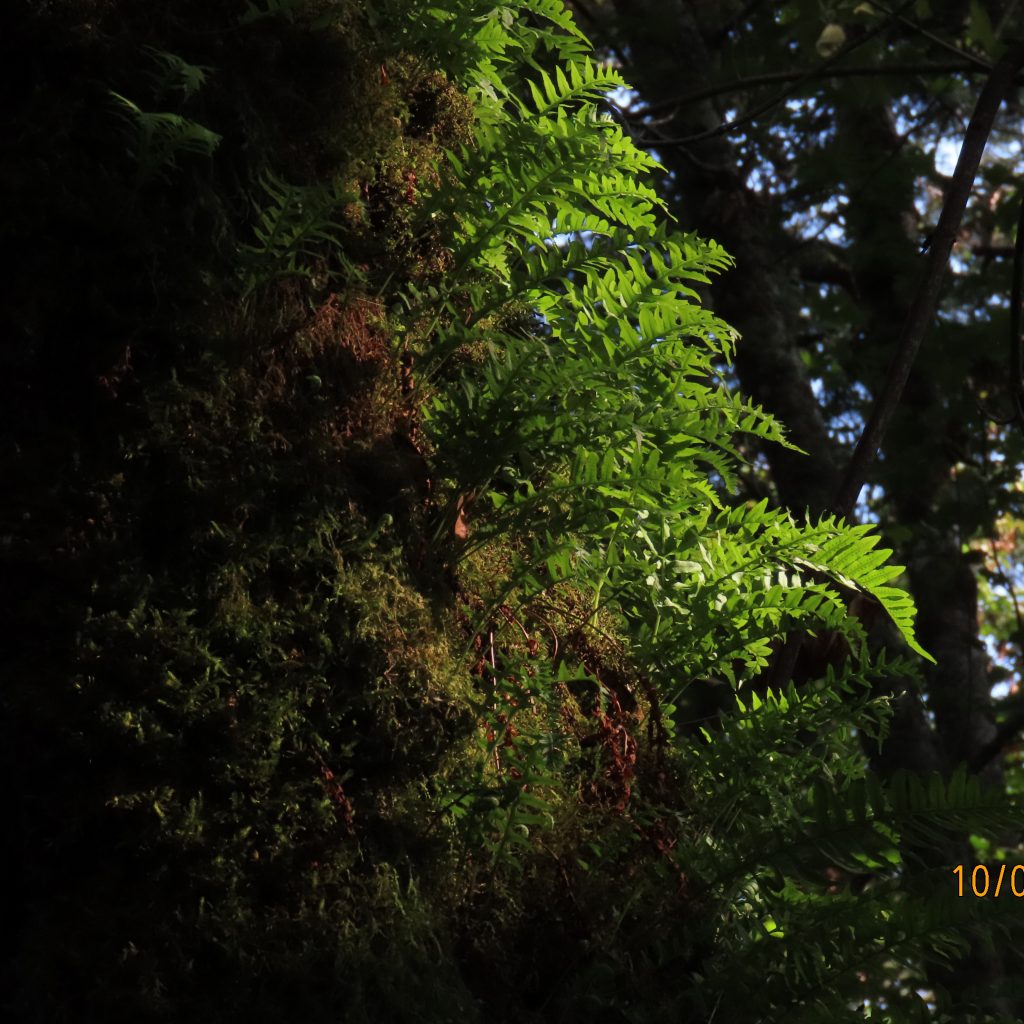
Just amazing!
Years ago I put a fallen branch under some shrubbery. It was mossy and covered with licorice fern. Now it’s a colony and goes dormant in the dry summers, but it’s glorious when it greens up right now in October for the wet winter.
When they go dormant do the pinnae just curl up, or do they fall off? They call them ‘summer deciduous’, which indicates they fall off, but I’ve seen other sources that say they just curl. What is your experience?
👍☺️